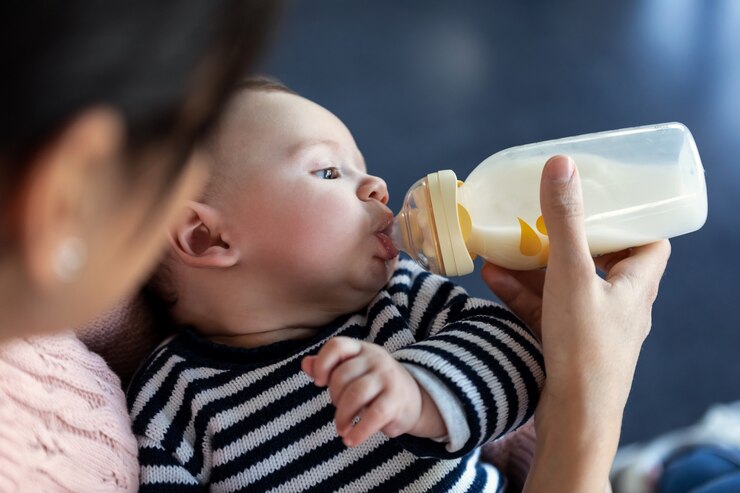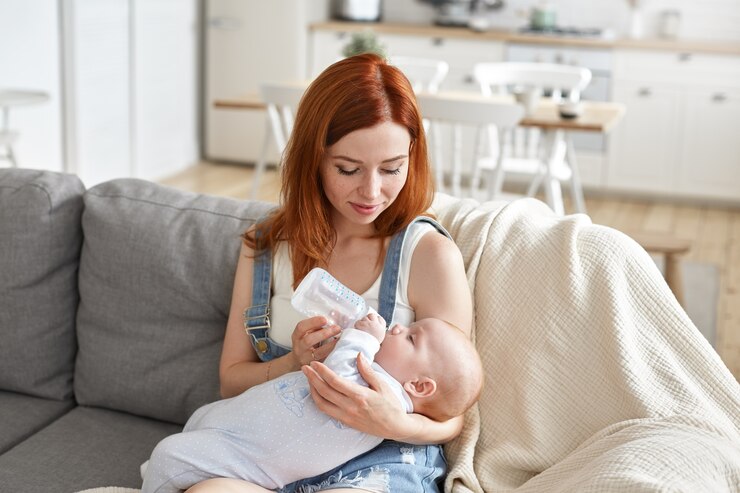Baby’s feeding bottle
A new and sterile feeding bottle needs to be used on your baby. However, how do you know when it is time to change the bottle out? Here is whether you can swap out these bottles and what the expert reviews are, along with our highest care of providing you with lots value for money as well as quality best.

Why Regularly Changing Bottles Is Important
But, before we jump to those pointers, let’s try and understand why changing your baby’s feeding bottle regularly is necessary:
Bacteria: Despite best attempts to clean, bacteria may be an issue after a long period of use.
Harm: Bottles and nipples — If worn, they can break down and become a choking hazard for your little one.
Damaged Bottles: If the bottle is cracked, milk or formula will not flow correctly this can make it hard for your baby to feed properly.
General Guidelines For Changing Feeding Bottles
1. Plastic Bottles
Although recyclable, plastic bottles are by far the biggest space hogs and they wear out fast. Here’s when to replace them:
Typically every 3 to 6 months: plastic water bottles. However, if any of your boards appear to have ruptures or discoloration or are bowing, replace them while you can.
After Boiling: Those who frequently sterilize plastic bottles by boiling, look out for any damage on them because hot temperatures can slowly degrade anything plastic.
Scratches: When scratched this can be a breeding ground for bacteria making it very difficult to properly clean the bottle.
2. Glass Bottles
Again, glass is durable and can be easily re-used many times but it is also not a forever thing.
Exam for Chips and Cracks: If you spot any chips or cracks in the glass, take it replaced right away. But the floor being littered, and having to deal with it.. that kind of stuff is not safe and a tough clean up.
The glass bottle might be fine, but the rubber parts (nipples and seals) should be replaced more often: such as 2 & 3 months.
3. Silicone Bottles
Fitmostorm, which are less prone to breakagesbut now more popular due its durabilitly and safety offered by the silicone bottles:
Every 6 Months Replacement: Although tough, we always suggest replacing your silicone bottles every six months.
Regularly Inspect: Check especially the nipples and seals to ensure its good condition.
Signs It’s Time To Change The Bottle
There are some cues once you need to replace the bottle it doesn’t matter what from {the bottles}.
Color Change: If the bottle or nipple discolors, it may be due to material deterioration.
Leaks: If there is a leak, the parts of the bottle are not aligning as they should.
Scent: Unsavory smells once cleaned suggest this is not your middling oil.
Problems With Milk Flow: If the milk or formula isn’t coming out as it should, inspect for damage to the nipple or clogs in the bottle.
Expert-Reviewed Recommendations
Pediatrician Insights
Dr. Jane Smith, a pediatrician with more than 20 years of experience claims, “Changing feeding bottles regularly is very necessary to maintain your baby’s health.” There should be a proper plan; now how the parents will not wait till they see any harm and start something like, especially plastic bottles.
Parent Reviews
A good routine keeps the bottles clean and feeding time manageable by replacing them on schedule. “Sarah, 2 time mother says,” I diligently change the bottles every three months for my baby and it has helped wonders to us.
Affordable Options
You do not need to spend a fortune in order to keep your baby bottles current. Some of the top-rated affordable ones include:
Dr. Brown Natural Flow: These bottles are cheaper than many, and have a vent system that helps reduce colic as well.
Philips Avent: Long-lasting, and budget-friendly options that trusted widely by parents.
Evenflo Feeding Classic Glass Twist Bottles: Best for budget-conscious families that prefer bottles made of glass.
Conclusion
It is very important to maintain the feeding bottles well for your baby as well as your peace of mind. Remember to check plastic bottles every 3-6 months for wear, and replace as needed, so you can provide your baby with the safest and most enjoyable feeding experience possible.
And, if you remain in doubt of the state of your baby’s bottles, it is better to error on the side of caution. A little investment in new bottles So you can avoid possible health issues later on.
Additional Tips for Maintaining Bottles
The baby feeding bottles will also be replaced in the end, but with maintenance can last longer. So without any delay, bellow are the important steps to enjoy bottled beer in its original form.
Sterilising after each use — all bottles should be sterilised post-use to eliminate any bacteria. It can be done either by boiling, steaming sterilizing or microwaving in designated steam bags.
Lightly scrub the bottle using a soft bristle bottle brush Other bottles may be safely washed in the top rack of a dishwasher.
Check every day: Whenever you clean a bottle and nipple, always be accustomed to examine them for damage or wear in each feeding.
Storage: Place your bottles in a dry and clean place where it cannot be open touched. To avoid developing mold, make sure all parts are totally dry before you reassemble them.
Environmentally-Friendly Replacement Solutions
Parents looking for sustainable bottle replacements Here are some eco-friendly practices to consider:
Recycling: If your community program includes baby bottles, especially those made with plastic or glass
Sources: Glass breakage, although not ideal, is less absorbent through intact glass or some silicone feeding bottles can be donated to organizations that support families in need.
Biodegradable- There are companies who provides bottles completely biodegradable option made from plant-based ingredients that can be good pick for eco-friendly families
Introduce only these instructions and select replacements techniques. This secure, sanitary, environmentally friendly regimen ultimate for you and your baby’s must not abandon the earth with ground filled with disposable parts of a jar here and there.
What are some FAQs about Endura?
1. How frequently should you check your baby feeding bottles?
Baby bottles need to be checked daily If you see any signs of damage, wear or lack of cleanliness — in other words, anything that might become a serious maintenance issue down the line), this is your chance to inspect it before it snowballs.
2. How should you sterilize your baby bottles?
Here are some efficient ways to do that at home; Use Boiling Water: In a saucepan, heat the water and steam the baby bottle for 5 to 6 minutes instead of an electric steam sterilizer or you could use microwave steaming bags. Manufacturers write instructions for a reason!!
3. Are glass bottles safer than plastic?
While the ultimate goal of a zero waste type of system is not to landfill, as we are co-owners and direct manufacturers we kill and bury (the Livermore CA dump) many more thousands of glass cuzers than plastic ones without a second thought. But the BPA-free plastic bottles that you regularly use are safe as they are modern and designed to be, with each having its upsides and downsides. When choosing, take into account durability and- or topple ignores ease of employ.
4. Can I reuse old bottles for my next child?
While glass or silicone bottles can potentially be used again, parts like nipples or seals will more than likely need to be replaced and any wear from use should be checked out. After some time, the plastic bottles with a shorter life span break and you change them for new ones as they offers maximum safety and hygiene.
5. What should I do with old bottles if I can’t recycle them?
If recycling is not an option, you could also donate whole bottles to family support organizations in the area (provided they are safe and clean to use), and if appropriate turn them into home reusable items “home”, such as organizers or plant holders.
Read more here: What You Need To Know When It Comes To Replacing Feeding Bottles For Your BabyAll these FAQs will help you addressing your doubts on all the responsibilities and choices you face when to hold or replace a bottle, for your babies — balancing baby health with safety and sustainability.








2 Comments
Pingback: Top Benefits of Using a Baby Walker for Your Child's Development - New Modern Moms
Pingback: Essential Parenting advice for new moms Should Know - New Modern Moms